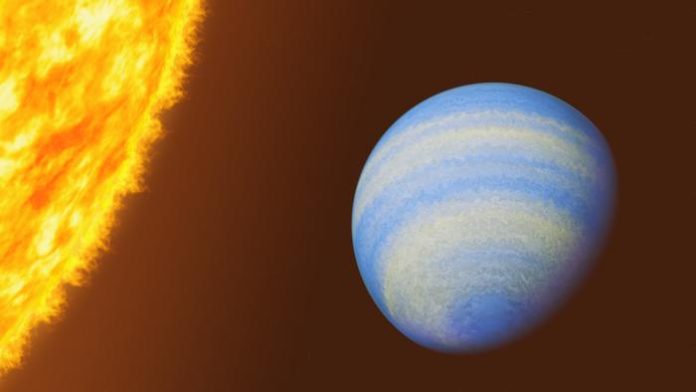
Studying the atmospheres of exoplanets is helpful for several reasons. Sometimes, it helps in understanding their formation.
Sometimes, it helps define whether the planet might be habitable. And sometimes, you allow a press officer to write the headline “Stench of a gas giant?
Nearby exoplanet reeks of rotten eggs.” That headline was released by John Hopkins University’s (JHU) press department after a study describing the atmosphere of one of the nearest known “hot Jupiters” was recently published in Nature.
The malodorous stench from rotten eggs is caused by a compound known as hydrogen sulfide.
In the case of exoplanet HD 189733, the atmosphere has trace amounts of the molecule. Technically, even a tiny amount is enough to cause a rancid smell.
Still, given all the other components of the planet’s atmosphere, it might not even be noticeable to a physical nose.
So, how did astronomers detect it? By using spectral analysis from the James Webb Space Telescope.
It showed not only hydrogen sulfur in the planet’s atmosphere but also other types of sulfur, which is considered one of the building blocks of life as we know it and, therefore, a prime candidate for detection in the hunt for habitable worlds.
HD 189733 is clearly not habitable. It is 13 times closer to its host star than Mercury and suffers from notoriously bad weather, including sideways raining glass, 8,000 kph winds, and temperatures above 900 C.
However, it does pass in front of its parent star once every two Earth days, making it a baseline case for exoplanet atmospheric observations.
Discovering hydrogen sulfide in its atmosphere, which had not been previously detected, was only one of the atmospheric findings of the study by Guangwei Fu of JHU and his colleagues. Another important one was the lack of methane in the atmosphere.
Despite physical conditions that would make it unlikely that methane could exist in the planet’s atmosphere, previous studies have found it. In contrast, Dr. Fu’s comprehensive study clearly did not see methane in HD 189733’s atmosphere.
It does have metals in its atmosphere, though. Just like stars, exoplanets can have a “metallicity” level. Metallicity can help determine how a star’s mass can vary with its metal content.
In our own solar system, Neptune and Uranus have higher metal concentrations than Jupiter and Saturn despite having less mass. Scientists are still studying that correlation.
Overall, exoplanet creation is a hot research topic, and understanding the atmospheres of as many planets as possible will allow scientists to create better models of how exoplanets form. JWST is one of humanity’s most powerful tools to do that, and describing HD 189733’s atmosphere in such detail is a very good baseline to compare other exoplanet’s atmospheres.
And JWST is far from done collecting new primary data on those exoplanet atmospheres. As more data is collected and analyzed, HD 189733’s atmosphere will serve as a touchstone for comparing other gas giants in other solar systems. At least scientists won’t have to smell it to do so.
Written by Andy Tomaswick.



